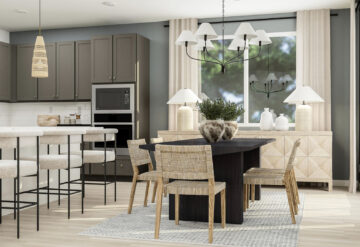Looking into settling down and buying a home soon? One of the first things that you need to decide on is whether you want to live in an upbeat city or find comfort in a family-friendly suburb. Before taking this major decision it is important to consider many factors. This Zillow checklist will help you decide where to live.
Choosing to house-hunt in the city, suburbs or far from the madding crowd is one of the first decisions you’ll make. Cities hum with urban energy, suburbs offer family-friendly enclaves and the country can be a breath of fresh air. The choice you make should be what works best for your lifestyle.
Communities and neighborhoods are always changing, and house values change right along with them. So when you start house shopping, look for an area you think is comfortable for you today and a smart investment tomorrow.
Here a checklist as you sort through your options:
Amenities: Are there nearby parks and open spaces or chic shops and trendy restaurants? How about libraries, grocery stores, and fitness centers (or a community center with all of the above)? The best way to find out is to get out of the car, walk around, and ask the locals what they like and don’t like about the area.
Schools: Even if you don’t have children, this may be the single-most important marker of a good neighborhood. That’s because many homeowners do have kids, which means they’re concerned about low crime, safe streets, good schools and the other characteristics that help good neighborhoods stay that way. Find out about test scores, class sizes, and school ratings and reviews on Zillow. This information is furnished by schools rating site GreatSchools and is included on any home you see on Zillow – whether it’s for sale or not.
Community services: You want to get a sense of the community and its current affairs. Reading community blogs and local newspapers will clue you in about issues like traffic, safety and development projects.
Transportation: If you want to be car-free, check out the local transit system. See how close the stops are to the neighborhood or whether you’ll need to drive to a transit parking lot. Check how often the transit system runs throughout the day and into the night. Homes on Zillow include a Transit Score which measures how well the address is served by public transportation.
Commute times: If you plan to get to work by car, determine whether you will you be driving residential streets or busy arterials. Drive around at all times of the day and not just on the weekend while you’re looking at houses. Drive your route during rush hour. Few things in life are more frustrating than finding out that a 15-mile commute to work takes an hour, each way. Drive it a few times and for a true test, nothing beats 5 p.m. commute home on a rainy or snowy Friday evening.
Ease of access: Get a map of the city and put a dot on the places you will frequent: Work, shopping, schools, etc. You may be able to purchase a home outside of the city or farther away for less, but do you want to spend time in the car? Maybe that more expensive house closer-in could be a better deal after all. Each Zillow listing includes a Walk Score, which indicates how walkable the home is based on the distance to nearby amenities.
Safety: You can check online crime stats or drop by a local precinct, but the bottom line is whether you feel safe walking around at night.
Economic stability: A healthy mix of residential neighborhoods (property taxes) and businesses (sales and payroll taxes) sets the stage for vibrant, well-funded communities. Cities with colleges and government services are most likely to remain stable.
When it’s time to relax, do you like to walk the dog, browse the shops or hit the clubs and cafes? Or do you need wild open spaces and lots of elbow room? When you start to prioritize your preferences, you’ll likely find your choices will determine where to live.




